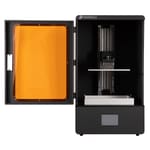The race to be the large budget resin 3D printer top dog is on, with Anycubic’s Mono X being the latest contestant.
With a build volume of 192 x 120 x 245 mm and a 4K monochrome screen, the Mono X promises big prints and lightning-fast layer cure times at high resolution.
While it’s not the first machine of its type to be seen – Elegoo Saturn first surfaced at the beginning of 2020 – it is the first of the marks. Will it eventually be overtaken, or has this head-start ended the race before it even really began?
We’re track-side to find out.
Verdict
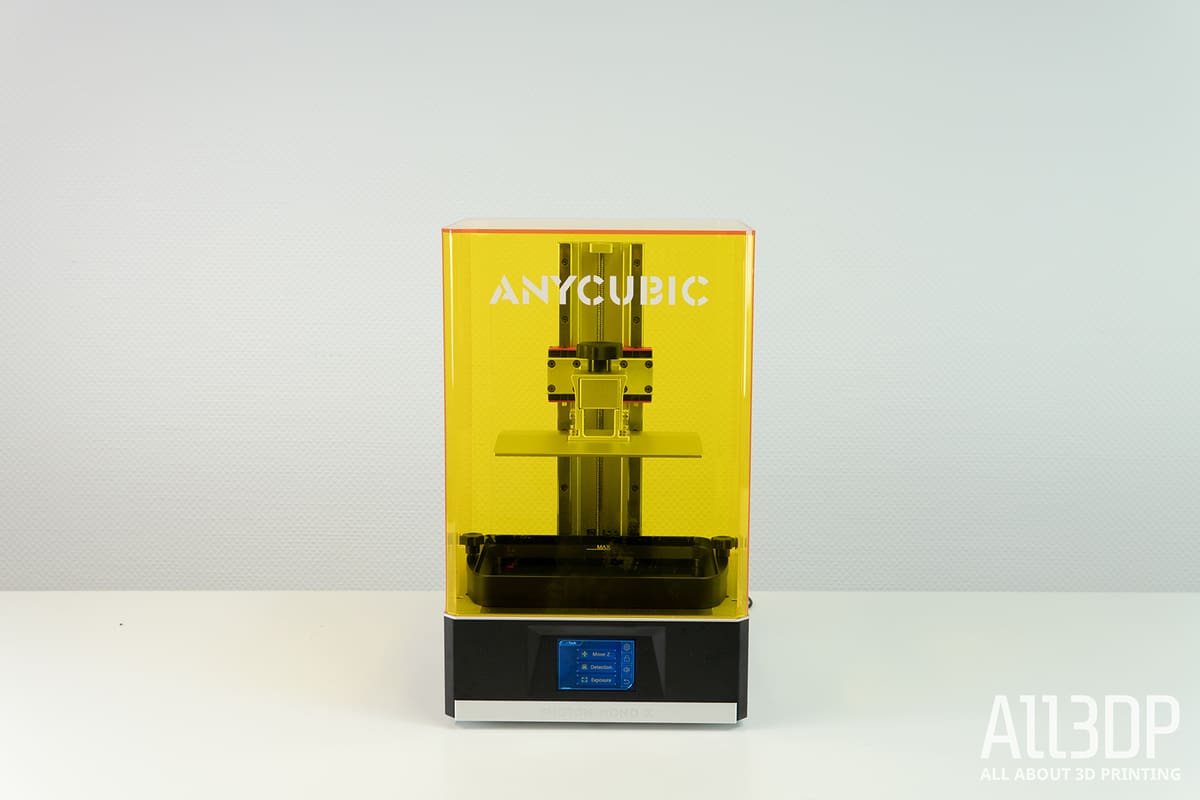
Pros
- Large build volume
- Fast and high-detailed prints
- Minimal setup
Cons
- Photon Workshop slicer not the best
- Tedious WiFi setup with no obvious benefit
- Pricey
The Anycubic Photon Mono X is a cutting edge MSLA 3D printer. With its large build volume, 4K screen, and monochrome display, it hits all the marks of current resin 3D printing trends. Packed into a comely metal exterior and fleshed out with a neat UI, the Anycubic Mono X is capable of producing high-quality prints with little effort to obtain them.

Bigger and Better

For its fifth anniversary in September 2020, Anycubic released a fleet of new machines, among them, the Mono X. The most eye-catching of the lot, it also happens to be the priciest, with a price tag of $759. Not particularly meager, but then neither are its capabilities.
Ever since Elegoo showed the possibilities a large, monochrome-LCD-toting resin printer can offer with the Saturn, a trend was clearly set in motion.
We have been hands-on with Anycubic’s effort for some time now, and after a slow start, we find ourselves impressed with its performance. Here’s why.
Lights on
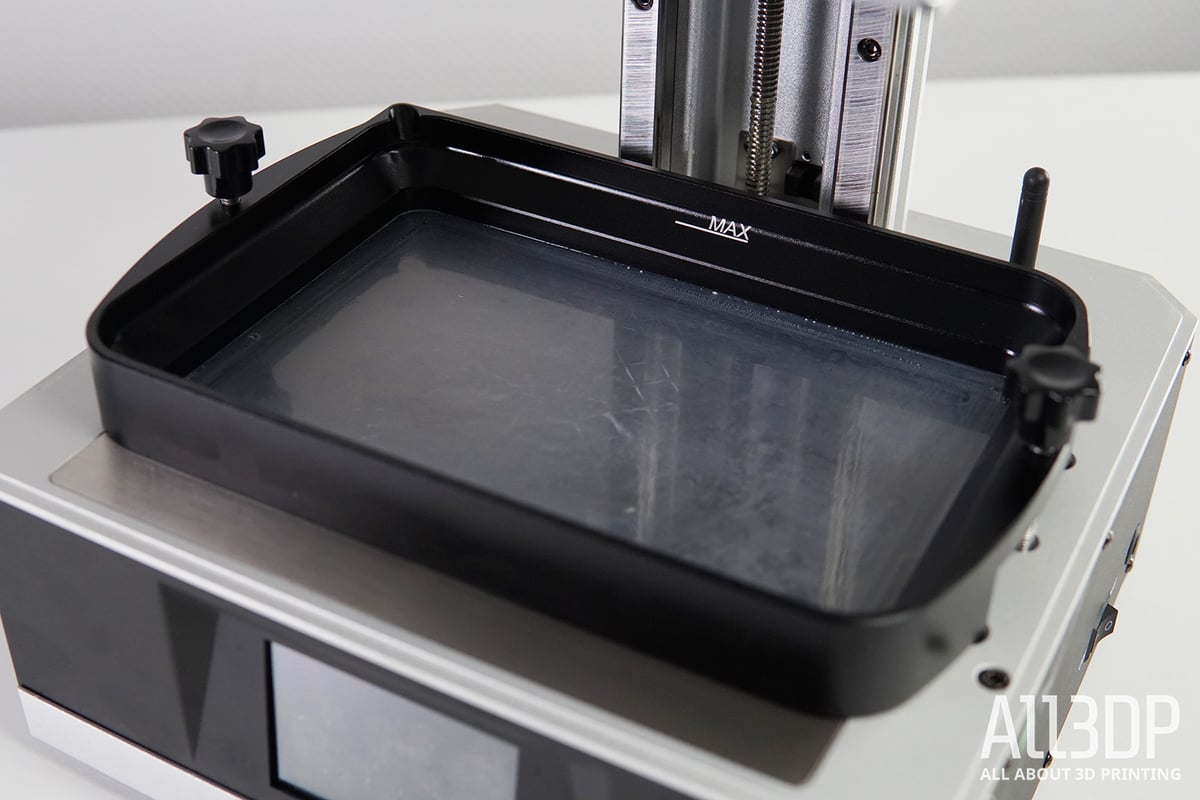
As its centerpiece, the Mono X houses an 8.9-inch monochrome LCD. Monochrome displays have rapidly become what could be considered the new minimum requirement in modern MSLA 3D printers. The benefits can be summed up as follows: faster curing times, less energy consumption, and a longer lifespan than formerly used RGB-screens.
UV light in RGB screen printers is essentially under-utilized as the LCD would filter out most of it, extending each layer’s curing time, leading to a longer exposure and faster deterioration of the screen. With a considerably better (UV-) light permeability, mono screens can cut down cure times from 6 seconds to 1.5-2 seconds per layer.
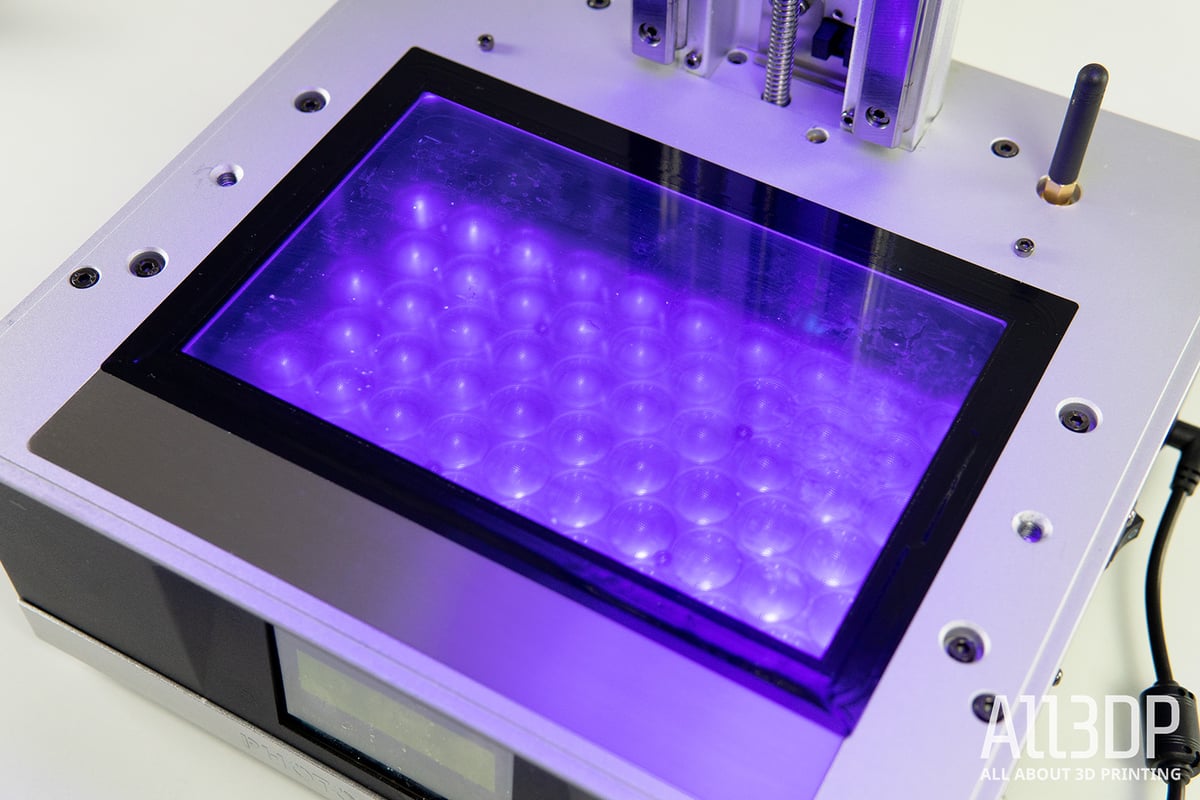
Typically monochrome screens last about 2000h, four times longer than their non-mono predecessors. For the Mono X, Anycubic provides the user with adjustable intensity control and advises to dial down the UV-light strength to 70-80% to prolong the lifecycle further. Please note that LCDs deteriorate when exposed to light, meaning you can not crank up the UV engine over time to counter the screens aging – quite the opposite.
However, we could see customers (that don’t mind longer curing times) making use of the control by dialing it further down, extending the lifespan even more.
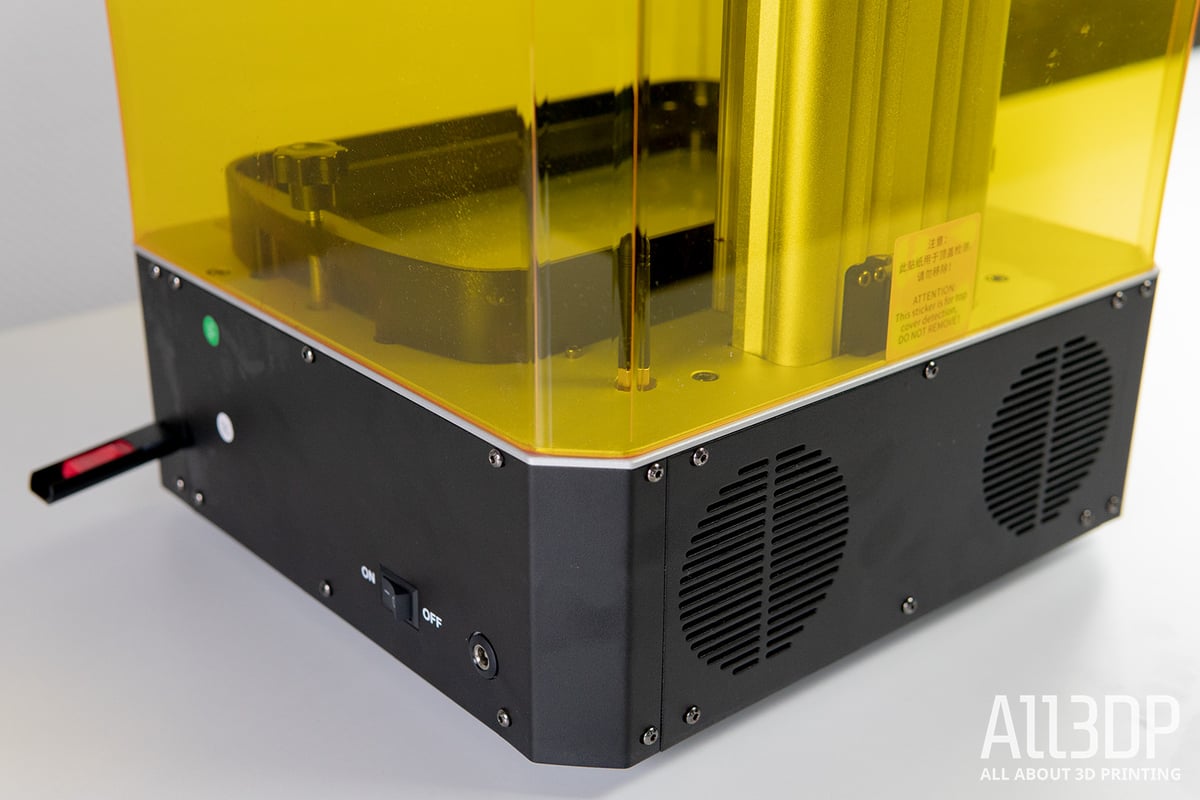
As is typical of monochrome-toting resin printers, the Mono X’s interior gets quite toasty during operation. The two large fans at the back do their best to counter it and are surprisingly quiet in doing so. Together with the Z-axis’s smooth and near-silent movement, the Mono X is pretty stealthy for the hefty block of a printer (270 x 290 x 470 mm) that it is. We recorded ~47 dB from it in operation, standing one meter away.
Big and beautiful
Packing 4K resolution, the screen has 3840 x 2400 pixels at its disposal, which spread across a printable area of 192 x 125 mm gives an XY-pixel size 50 microns – on par with similar large-sized competitors.

The total build volume of the Mono X is 192 x 125 x 250 mm, which (given the preliminary spec sheet Phrozen has released at the time of writing) should outdo the Mighty 4K (200 x 125 x 220 mm) ever so slightly and the Elegoo Saturn (192 x 120 x 200 mm) by large.
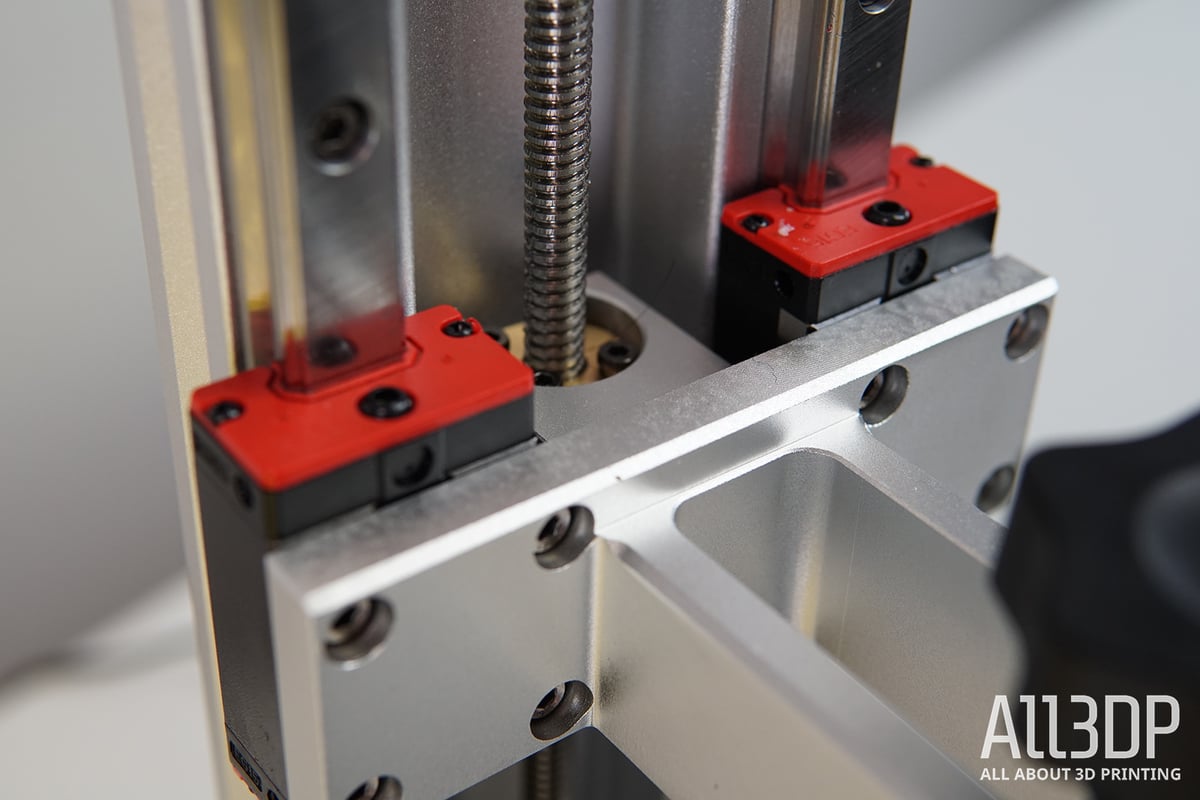
With a dual linear rail and anti-backlash nut combination, the Mono X’s Z-axis moves with stability and precision. Build plate leveling on the Mono X is, as often found on MSLA printers, straight forward. Release four screws, home the plate onto a piece of paper, and tighten the screws again – you are good to go.
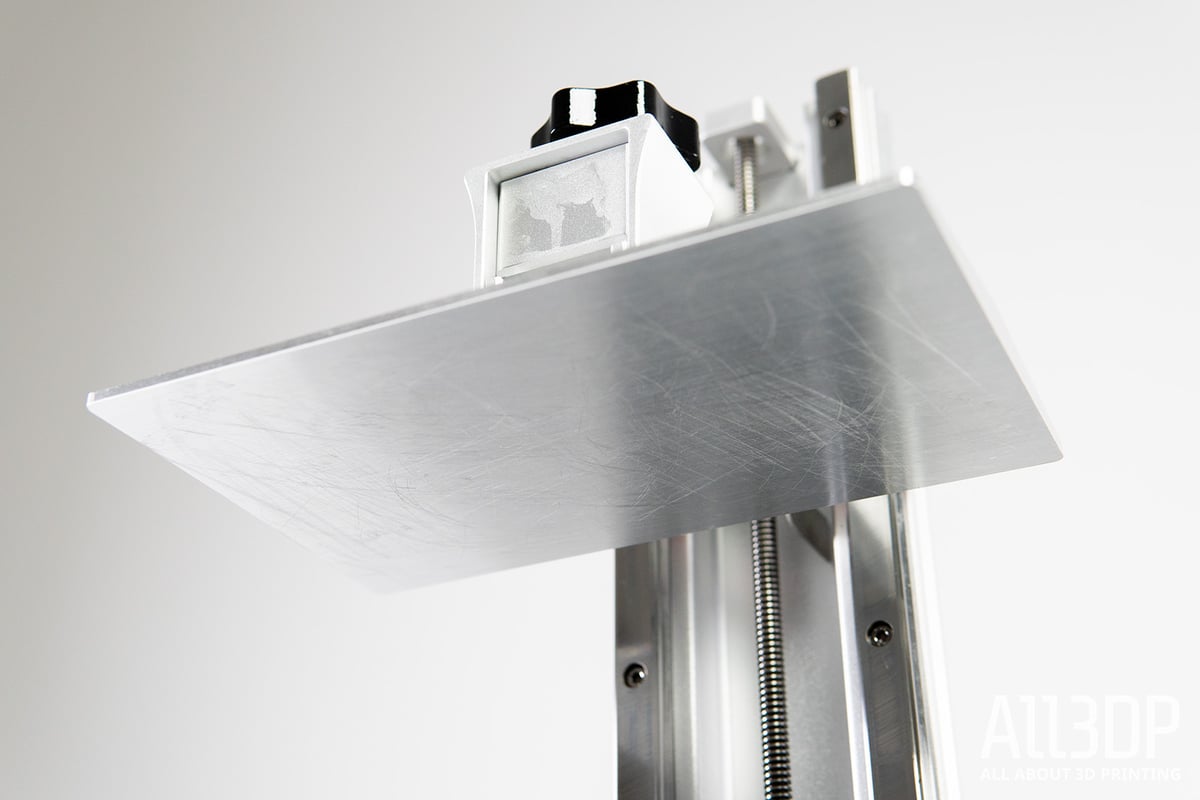
Some Redditors found fault with the build plate not being perfectly flat with the corners warping by as much as 0.5 mm. Upon double-checking our own we could not find any irregularities. However, with the printer just being shipped out within the last few days, it is hard to say if we were lucky to get a build plate from the good batch or vice versa. We will keep our ear to the ground and update the review accordingly if a pattern can be seen. For now, affected users should contact Anycubic for a replacement or – while waiting for the shipment – try to hone it down.
In terms of connectivity, Anycubic threw in a WiFi antenna. Living in the age of wireless this and wireless that, we welcome the upgrade but really, was there no better place but to position it inside the printer right next to the resin tank – a recessed thread provocatively placed for stray drips of resin to ruin.
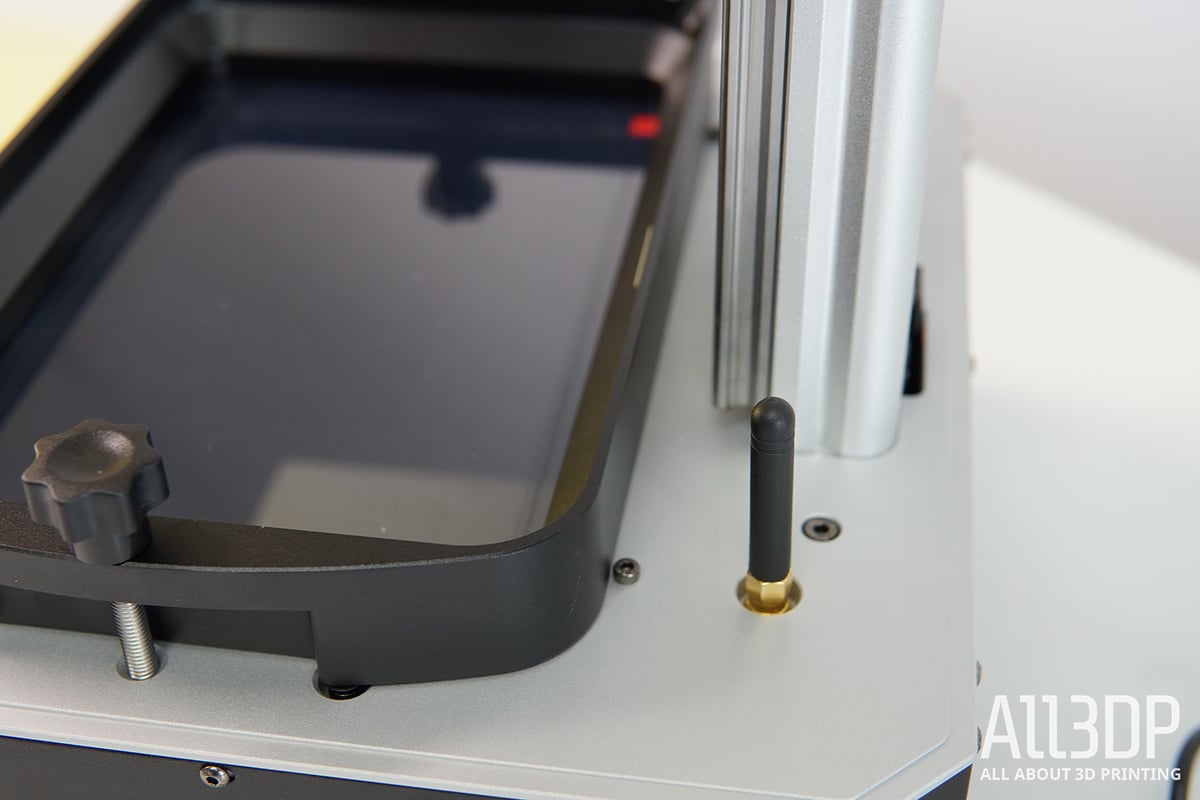
Overall, the Anycubic Photon Mono X’s style and form are essentially what you look for in a resin 3D printer. The sturdy, all-metal chassis encompasses the 3.5-inch color touchscreen at the front and the USB port on the front right side while being topped off with the Anycubic-like yellow removable lid: no revelations, but a classy design.

Printing
When it comes to printing with the Anycubic Mono X, we had quite a bumpy start. Or should we say gooey? After having our initial prints fail and discovering a phenomenon we had not yet encountered before – the curing of a sticky membrane onto the prints and build plate – our contacts at Anycubic provided us with an adjusted profile for the printer.
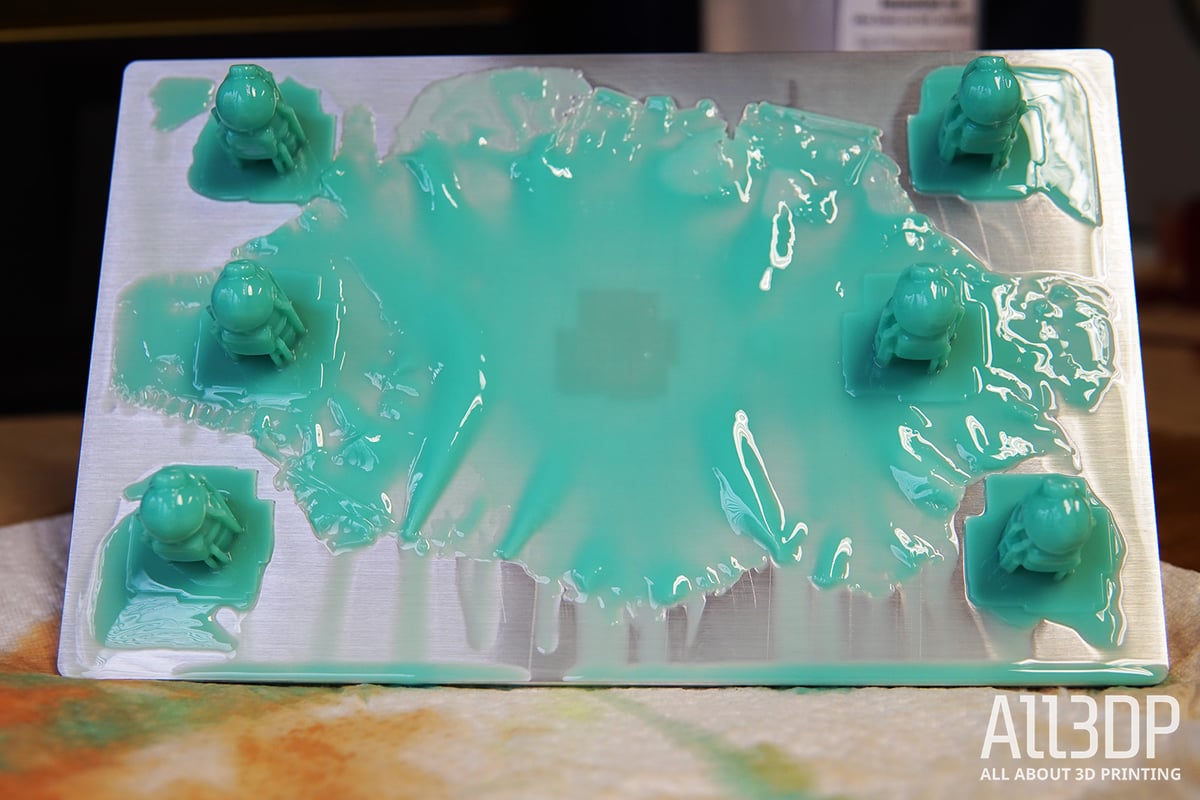
With the UV light source dialed back and the new printer profile – which is now the Mono X’s default in Photon Workshop (1.24) – selected, we overcame the stuttering start.
Once we were up and running, the prints turned out neatly, although we found occasional scraps of cured resin would remain in the tank, despite the flawless prints. Ultimately, we get the feeling that the Mono X is almost the finished article but could do with further fine-tuning. This, despite over a week of continued use with nothing but print successes (using the updated profile.) If only to spare you of the occasional hassle of having to comb through the resin vat for leftover particles.
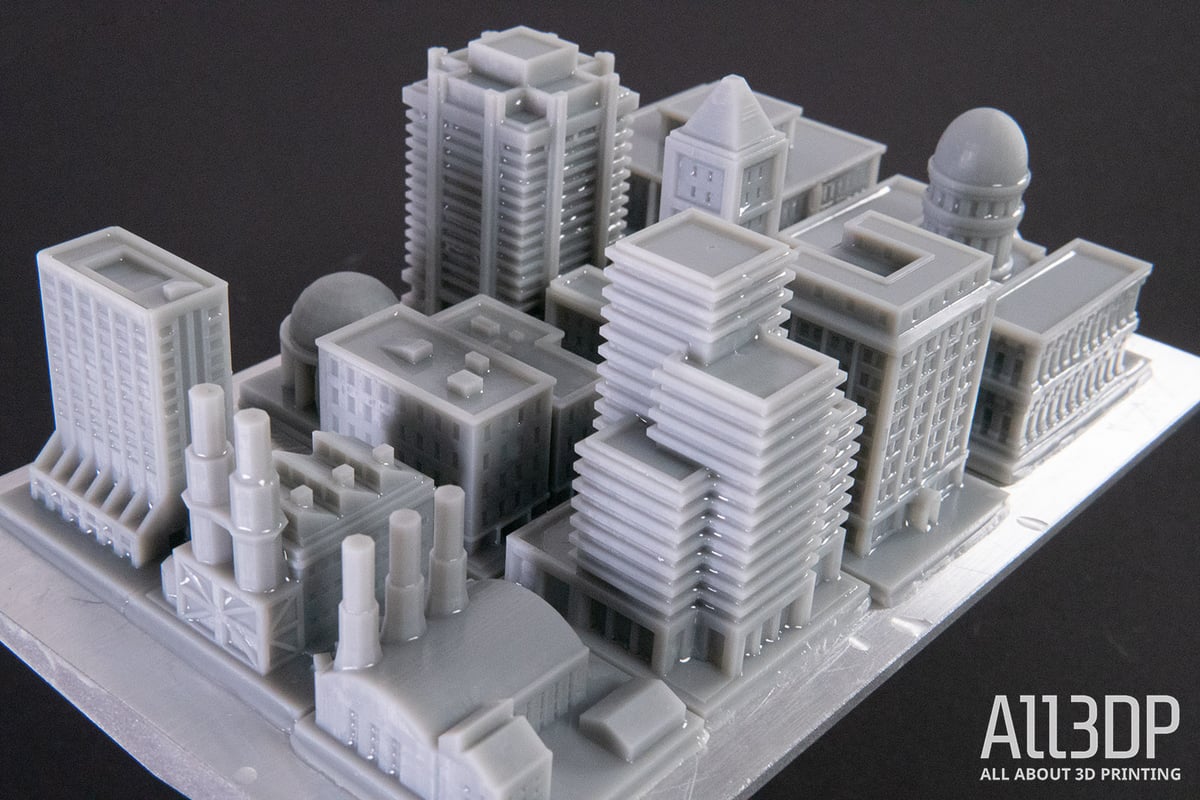
Anycubic’s Resin Exposure Range Finder (RERF) comes in handy to find the best curing settings. Included on all new Photon printers, the curing test print helps the user zero in on a resin’s optimal layer cure time. Scratch the test print and include that file with every resin printer, we’d say.

Software
Your slicing options with the Mono X are a little limited, with Anycubic’s proprietary Photon Workshop slicer and Lychee slicer (albeit using a beta printer profile) being the only two options we know of.
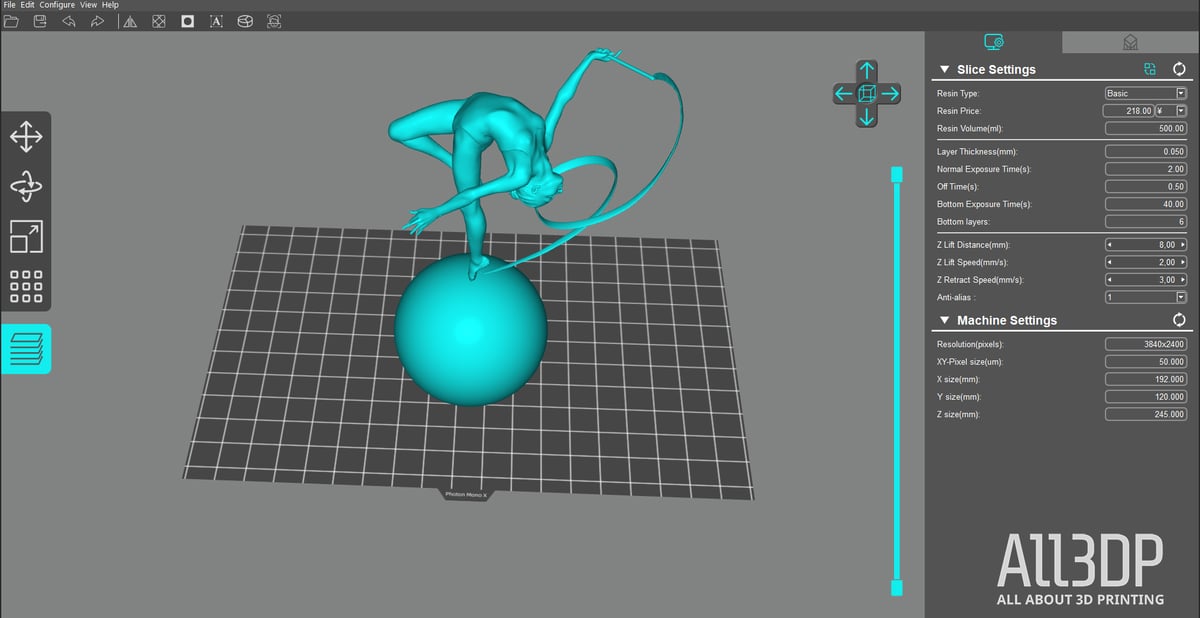
PhotonWorkshop is more than adequate for print preparation and has some neat features, including a lettering function that lets you physically label prints and other more gimmicky options such as face generator, which attempts to turn a set of images into a representative 3D model. There’s room for improvement, though, with vocal critics petitioning for support for the Mono X in ChiTuBox – possibly the most widely used resin slicer.
Particularly annoying is that to preview your slice of a model, including the expected print time, you must save the sliced file even if you don’t necessarily want to print or wish to make further changes. With the Mono X’s large print volume, it’s not unusual for some files to take over ten minutes to render.
We’ve heard from Anycubic that the company is working with ChituBox to support the Mono X (and other Photon Mono printers) in a future update. In the meantime, users will have to improvise solutions to showstopping limitations they find in Photon Workshop. Inconvenient as it is, it’s pretty simple to prepare a print in your preferred slicer and export the prepared model as an STL for import into Photon Workshop for slicing.

Usability
Once you have sliced your file, the transfer of that data must be done by hand (and a USB stick).
Although befitted with a WiFi antenna, the printer can only be wirelessly connected via Anycubic’s mobile app to monitor, start and pause prints, and change settings. It’s nice, but not a patch on what could have been with a direct connection between the slicer on your computer and the printer. That would have elevated it from a gimmick to a useful feature. Getting the app set up in the first place is laborious if your WiFi password contains special characters. Hardly worth the effort.
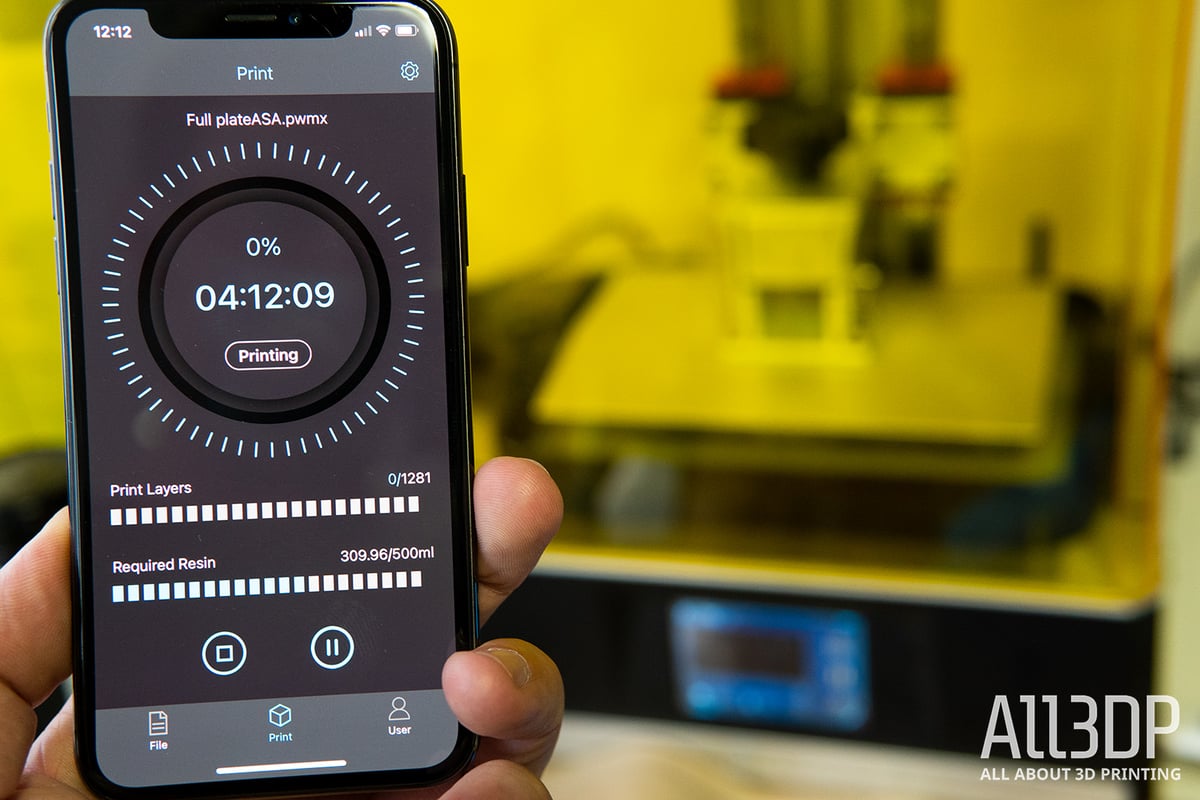
The Mono X has a refined UI – the touchscreen is highly responsive and lets you alter print settings such as layer cure time and the UV light strength mid-print, giving you a great degree of control over your prints.

Is it Worth it?
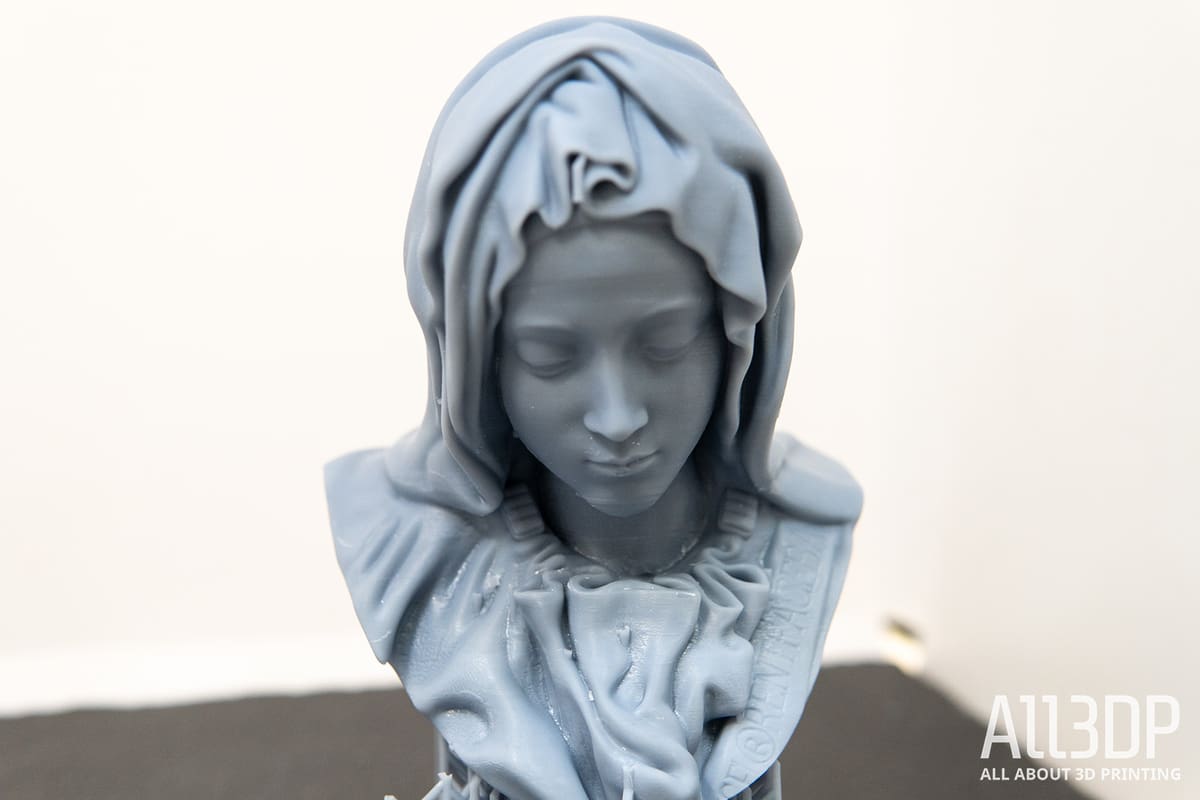
Dancing through this evaluation of the Anycubic Photon Mono X has been a waltz. Feature-wise it checks all the must-haves of current resin printing: monochrome screen, 4K resolution, and a large build volume. All that and more is packed into a well-designed, slick-looking chassis topped off with safe and typically great UI.
If it hadn’t been for the initial print failures and resin “skin” (for lack of a better word) lingering in mind, we would have rated the printer’s performance class A out of the gate. Certainly, with the new printer default profile, the performance has been nothing short of excellent.
There are small caveats, though. Photon Workshop, which is feature-rich, is far from great, and the WiFi functionality is not worth it. If the reports of uneven print plates should pile up in the weeks to come, this would preponderate, but at the time of writing, a trend is not yet recognizable.
The Mono X’s price tag of $759 prices it out of being the entry printer into the world of resin 3D printing (there are plenty of sub-$300 machines for that), but with the demand for larger desktop resin printers growing, the Mono X does well with its 192 x 120 x 245 mm print volume and all-round quality. Your printing can go beyond miniatures to life-sized props and the likes in one go.
As it stands, the Mono X has to compete with the yet-to-retail Elegoo Saturn and the imminent Phrozen Mighty 4K for fast and big printing. Head start or not, the Mono X is on a good track.

Features
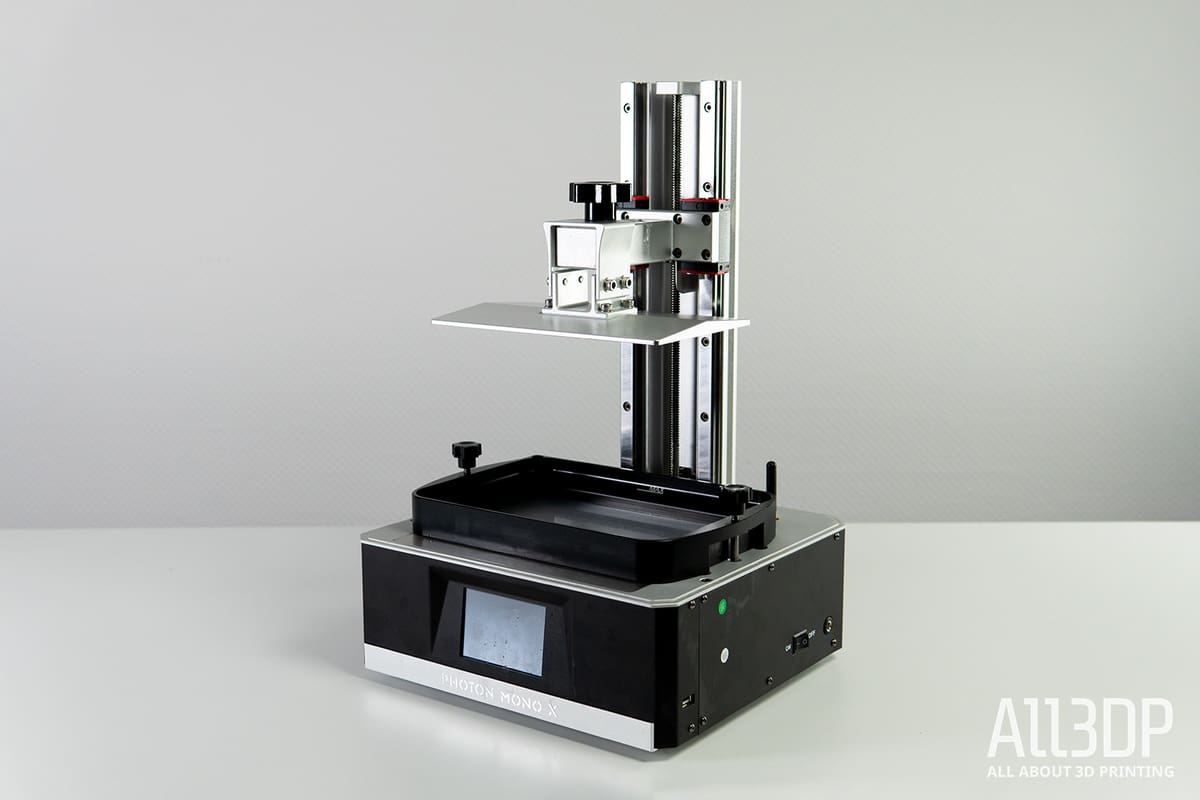
Printing Speed
The heavy hitters in MSLA 3D printing today generally have two trump cards to play: a fast print speed, and high resolution.
The former has recently – with the use of monochrome displays – taken a leap forward, with average layer cure times cut from around 6 seconds to ~2 seconds. These swift cure times can be achieved due to the monochrome LCD’s light permeability – basically allowing for a greater light intensity to pass through, which than again results in faster curing – compared to the formerly used RBG screens.
The Photon Mono X, as the name suggests, features a monochrome display. This allows the printer to achieve prints speeds of 60 mm/h at 0.05 mm layer height, which makes it about three times faster previous Anycubic MSLA printers such as the Photon S.
Taking the large build volume (192 x 120 x 250 mm) and the fact that layer curing time is not affected by the size of the prints into account, then the potential uptick in output is even higher, meaning more prints at the same time and faster.
Resolution
The second trump card an MSLA 3D printer might have in its deck is the screen’s resolution. The Photon Mono X features an 8.9-inch 4K (monochrome) LCD with 3840 x 2400 pixels. This translates to an XY resolution of 50 microns.
Keep in mind, while other smaller screen-sized 4K MSLA printers, such as the Phrozen Sonic Mini 4k, can achieve an XY resolution as low as 35 microns, this is due to the smaller screen size. The larger your screen, the more pixels you need to achieve smaller voxels (and finer print resolution.) The difference between 35 and 50 microns might be almost impossible to tell with the naked eye, but for some specialist applications, it could matter.
Also, monochrome displays usually have a longer lifespan, with over thousands of hours of use possible before needing replacement.
Build Volume
The 8.9-in display transcribes to a build area of 192 x 120 mm. For comparison, combined with a Z-axis height of 250 mm, the Photon Mono X’s print capacity pans out to roughly four and a half times the volume and about three times the print area of the Photon S.
Design
Design-wise, the Anycubic Photon Mono X – from what we can tell so far – ticks all the necessary checkboxes. The removable top cover grants easy access to the print bed and vat. Anycubic’s new light engine, boasting a quartz lamp and “matrix design”, promises a uniform distribution of UV light. The Z-axis lead screw is guided by two dual linear rails for stability, and there’s a 3.5-inch touchscreen in the machine’s aluminum for finger-poking interaction with the printer. Nothing too fancy, but the bread and butter stuff is all there.
Slicer
The Anycubic Photon X Mono comes with Anycubic Photon Workshop, the company’s proprietary slicing software. With it, you should be able to perform the requisite functions needed to successfully set up resin prints, including hollowing, punch-hole, and model cutting functions, plus a few neat extras such as the lettering function, which allows you to add text onto your model. Plus, it supports up to 8x anti-aliasing.
Past Anycubic MSLA 3D printers were compatible with the widely-used ChiTuBox slicing software, so we are in high hopes that, if not at launch, compatibility will follow soon after.
App Connectivity
According to Anycubic, you will be able to monitor printing progress and remotely adjust settings. Connectivity comes by way of a WiFi module.
Further Features
Additional features on the Anycubic Photon Mono X include:
- Resin fill indicator in the vat
- A brushed aluminum print platform
- A new UI
- Automatic shutoff safety feature (a feature introduced with the Photo Zero, the printer will automatically pause if the top cover is removed mid-print)

Tech Specs
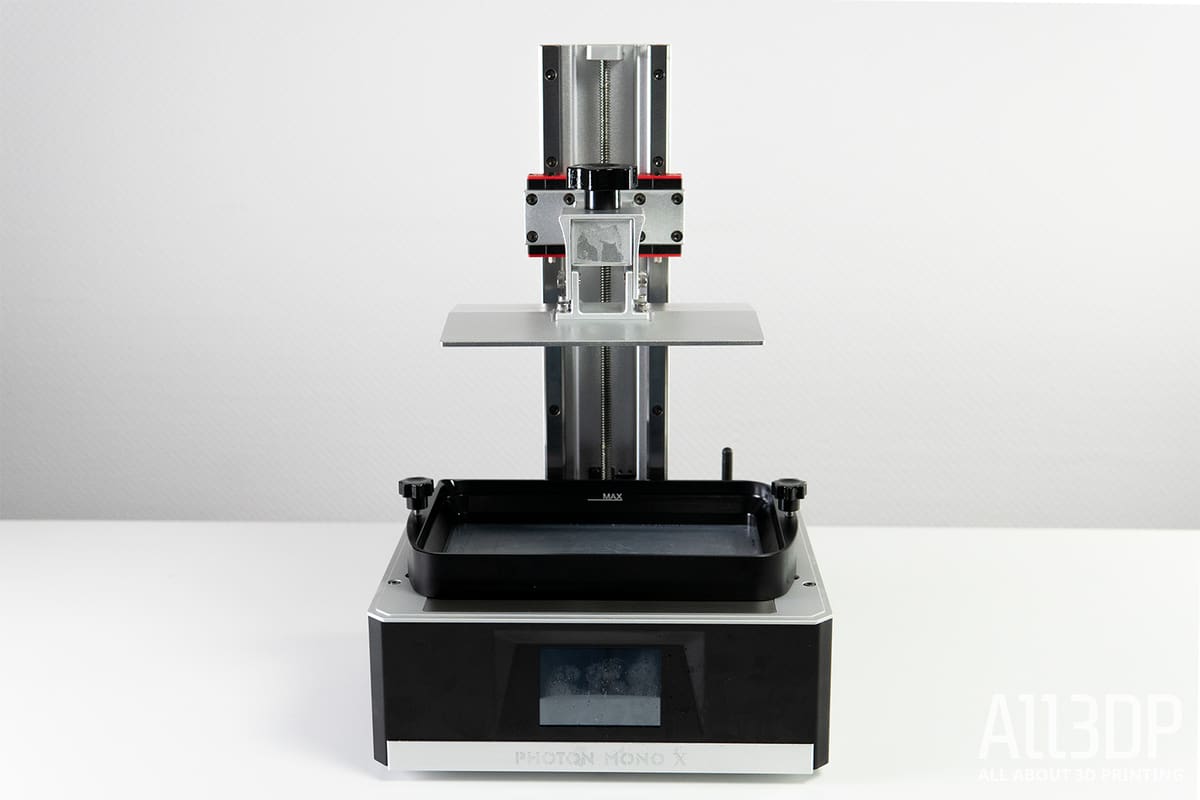
GENERAL SPECIFICATIONS
- Technology: LCD
- Type: Resin
- Year: 2020
- Assembly: Fully assembled
- Manufacturer: Anycubic
- Country: China
3D PRINTING SPECIFICATIONS
- Build Volume: 192 x 120 x 245 mm
- Layer Height: 10+ microns
- XY Resolution: 50 microns (3840 x 2400 pixels)
- Z-axis positioning accuracy: 0.01 mm
- Printing Speed: 60 mm/h
- Bed-Leveling: Semi-automatic
- Display: 3.5-inch touchscreen
- Third-Party Materials: Yes
- Materials: 405 nm UV resin
SOFTWARE REQUIREMENTS
- Recommended Slicer: Anycubic Photon Workshop
- Operating system: Windows / macOS X
- File types: STL
- Connectivity: USB, WiFi
DIMENSIONS AND WEIGHT
- Frame dimensions: 270 x 290 x 470 mm
- Weight: ~10.7 kg
- Boxed size: 365 x 380 x 580
- Weight (packed): ~14 kg

Similar Printers
You may also be interested in the following printers (or, for even more, check out our Best Resin Printers Guide).
Elegoo Saturn
The printer the Mono X is most likely to duke it out with, Elegoo’s Saturn offers much the same capability of the Mono X, albeit with a slightly smaller print volume. It won’t be available until November, however, so you’ll be waiting a while until there can be any real comparison between the two.
Peopoly Phenom
One of the largest commercially available resin 3D printers, the Peopoly Phenom, offers a staggering build volume of 276 x 155 x 400 mm but lacks the monochrome-speed of the Photon Mono X.
License: The text of "Anycubic Photon Mono X Review: Supersize Pick" by All3DP is licensed under a Creative Commons Attribution 4.0 International License.
CERTAIN CONTENT THAT APPEARS ON THIS SITE COMES FROM AMAZON. THIS CONTENT IS PROVIDED ‘AS IS’ AND IS SUBJECT TO CHANGE OR REMOVAL AT ANY TIME.




